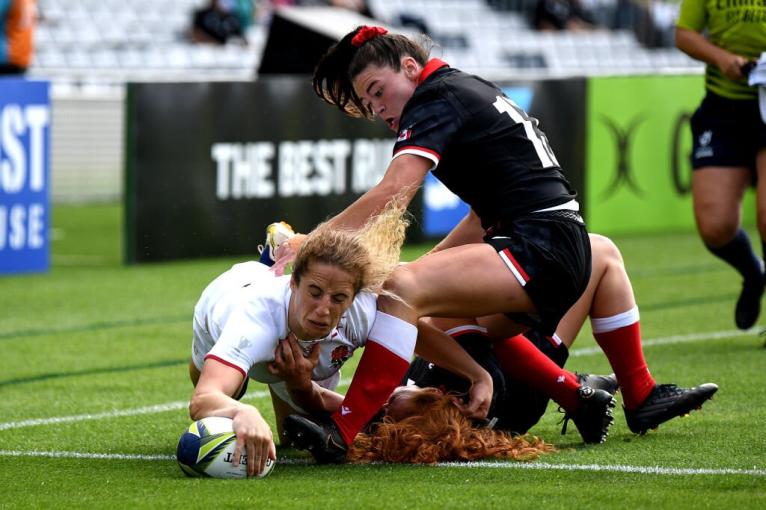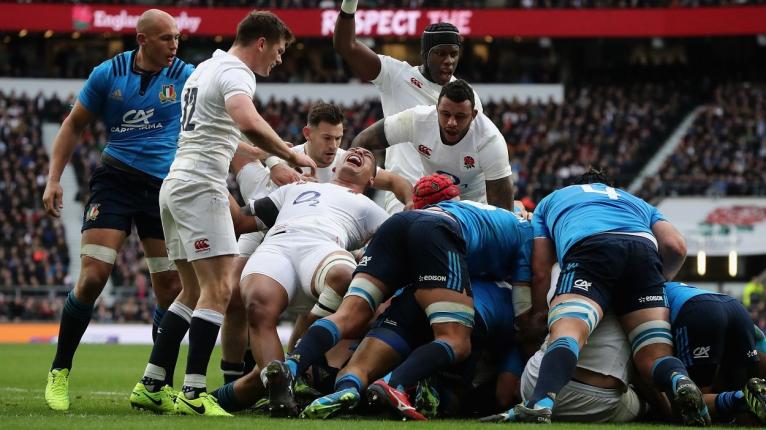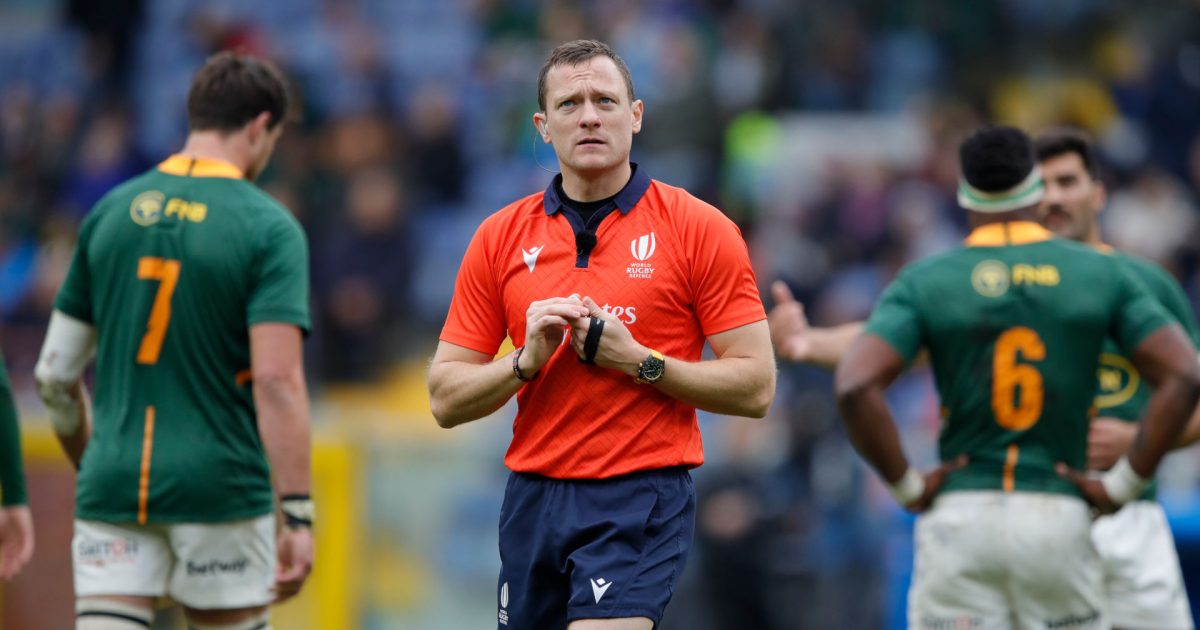At a recent Shape of the Game conference, all rugby stakeholders in the men’s XV game discussed ways of speeding up the game, getting the ball in play more and creating a safe and entertaining spectacle.
Now, with Rugby World Cup 2023 on the horizon, World Rugby has brought several Law Application Guidelines forward for implementation in the elite game. These changes took effect from 1 January, 2023, meaning they will be applied during the upcoming Six Nations Championship.
Ahead of the competition, referee Matthew Carley unpacks what these new Law Application Guidelines will mean for fans, players and referees, while referee Angus Gardner has explained some of the more complex and misunderstood current laws to fans.
So, let’s review their comments in detail and take a look at the changes you can expect to see in the Six Nations and beyond.
How will referees manage the scrum and lineout?
One area of the game where the new Law Application Guidelines will be particularly relevant is during scrums and lineouts.
As a result of the new guidelines, Matthew Carley believes that fans will no longer see players milling around waiting for a scrum. Instead, these spectators will regularly hear referees encourage players to form the scrum quickly.
This is a point emphasised in World Rugby’s ‘speeding up the game’ guidelines, which state that a free-kick should be given if a team is not ready to form a scrum within 30 seconds of the mark being made.
However, although forming the scrum quickly will help speed up the game and increase fan entertainment, Matthew Carley has also stressed that referees must continue to see player safety as paramount. As a result, he believes referees must ensure the players are comfortable before the scrum is formed.
While speaking about the new guidelines, referee Angus Gardner was sure to inform fans of exactly what he’s looking for in a scrum. He jokingly commented that “ball in, ball out” was the number one priority.
For this to happen regularly, he said that he looks for “a stable platform between the two teams”, as well as a “safe engagement process”. In addition, on the hit, both teams must be “still and stable” with “a forward pushing contest from both”.
In addition, Matthew Carley stated that lineouts are one area of the game where the new regulations will help referees gain some time back. He thinks that referees should prevent sides from huddling and should instead ensure that the lineout is formed quickly. This is a point that’s emphasised in World Rugby’s Law Application Guidelines, which state that a free-kick should be given if one team delays a lineout.
How do referees view advantage?
Angus Gardner believes that referees must look at two things when it comes to advantage: territorial advantage and tactical advantage.
When considering territorial advantage, he says that referees must decide whether the team has either gained field position or territory on the pitch that will allow them to take advantage of the opportunity.
He then added that the referee must also decide whether a team has gained a tactical advantage, such as a space to play. For example, if there has been a knock-on, the referee must consider whether the team has clear space to recycle the ball and move forwards across the advantage line.
How do referees manage TMO assistance?
The TMO (television match official) plays a vital role in ensuring the referee makes the correct calls and does not miss any incidents that need to be penalised. However, although TMOs are incredibly useful, some rugby fans have concerns that TMO reviews take too long.
Due to this, some adjustments have been made to the TMO protocol. Now, World Rugby has reminded match officials that “the current TMO protocol is aimed at identifying and ensuring clear and obvious offences are dealt with on-field.” The governing body has added that referees should “limit replays where not necessary”.
Matthew Carley has said that TMOs are now being encouraged to tell the referee when they’ve spotted a penalty-only foul play offence. This means the referee can play advantage and does not necessarily need to go to the screen to officially review the situation.
He also stated that referees and TMOs have worked hard to gain clarity around the head contact rule so the whole TMO process can be more streamlined. However, he went on to clarify that player safety and getting the correct outcome remain vital.
Ultimately, although referees are trying to shorten the time it takes to make a decision with TMO assistance, they will still take their time when required. But, Matthew Carley added that “hopefully that is less apparent than what we’ve seen in the past.”
He hopes that by encouraging the TMOs to be confident in what they’ve seen and empowering them to relay that information to a referee before an incident is shown on the screen, referees can make a decision within two to three replays.
How do referees determine grounding?
Angus Gardner has stressed that there are a couple of things that each referee looks at in relation to grounding.
For example, if the ball is already on the ground in the in-goal area, then all a referee is looking for the attacker to do is press the ball down.

Meanwhile, if an attacking ball carrier is in possession of the ball, a referee must look to make sure that there has been no separation between the ball and the player (such as the player dropping the ball). They must also make sure the player presses the ball into the turf.
How do referees manage deliberate knock-ons?
A knock-on occurs when a player knocks the ball forwards (just as the name suggests). Knock-ons usually happen accidentally when a player is either in possession or is attempting to catch the ball from a teammate. They can also occur when an attacker drops the ball over the try line under pressure or when a player is tackled.
However, on occasion a referee may determine that a player has purposefully knocked the ball on. This is known as a deliberate knock-on and it most commonly occurs when a defender makes an attempt to intercept a pass. In these situations, the player makes it look as though they’re trying to catch the ball but they actually just bat the ball down in order to stop a near-certain try or an overlap. Here, we should clarify that charge-downs are not considered as knock-ons.

Matthew Carley believes the new regulations will lead to a slight shift in what referees are looking for when it comes to deciding whether a player has committed a knock-on or a deliberate knock-on.
He said that although the deliberate bat of a ball forwards is quite an obvious action to spot, referees are now beginning to consider how much time and space a player has when they’re looking to intercept a ball. This means that if a player knocks the ball on while attempting to intercept it with one hand, this doesn’t automatically mean that a referee will rule that there has been a deliberate knock-on.
Instead, in these situations, a referee must assess whether the player was making a genuine attempt to catch the ball. If the player has time and space, has read the game well and is making an attempt to catch the ball (even if that attempt only utilises one hand), then the referee may decide that there has been a knock-on rather than a deliberate knock-on.
By contrast, if the player is operating in a confined space, doesn’t read the play and makes a batting motion with either one or both hands, then the referee is more likely to rule a deliberate knock-on has occurred because the player has not made a genuine attempt to catch the ball.
How will the jackler be managed in the ruck?
Let’s start with the basics here. The jackler is the first arriving team-mate of the tackler at the tackle, or the first person to get to an isolated ball carrier who is on the ground.
As this player has such a vital role, there are clear rules that state how a jackler must act in the ruck. For example, the law currently states that a jackler must remain on their feet and contest for the ball directly. If this player was initially involved in making the tackle, then the jackler must first release the ball carrier before they try to take the ball off the attacker.
Throughout any attempt to take the ball, the rules state that the jackler must support their own body weight. Any attempt to go to ground and reset must be penalised.

Matthew Carley says that the main thing he looks for with the jackler is “hands on the floor”. He explained that all referees want the jackler to support his or her bodyweight. By contrast, if the jackler’s hands are on the floor, then this may suggest to the referee that this player has gone past the ball. As a result, they’re no longer in control of the situation.
However, Mr Carley did clarify that there are occasions where the jackler may be allowed to place their hands on the floor and search for the ball, such as when the ball carrier has trapped the ball with their body.
That said, he reiterated that if the jackler is leaning with their weight through their hands or they’re waiting for the clear out to push them back onto the ball, the referee should penalise that action.
World Rugby’s new definitions emphasise this point and state that all players who put their hands on the floor at tackles, rucks and mauls are subject to sanction. However, judgement can still be used by a referee if the player is using the ground briefly to maintain their own balance and stability.
What are the current head contact processes?
If one player makes contact with the head of another, Angus Gardner believes that referees must follow a set process:
The referee must determine whether there has actually been head contact
The referee must work out whether there has been foul play
The referee must ascertain the level of danger (high or low)
The referee must look for any mitigating circumstances
Using this four-step process, referees can make accurate and well-informed decisions regarding the punishment required.

















